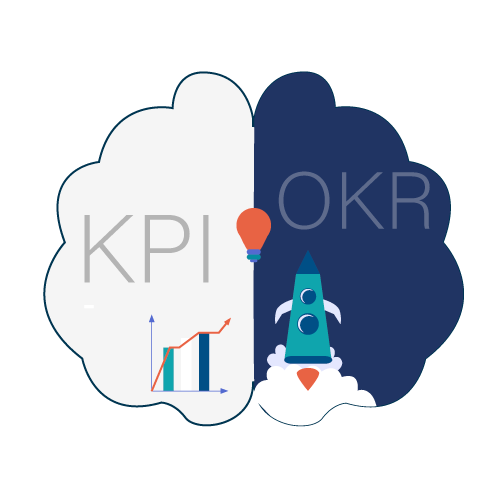
ConectoHub is an OKR platform that allows users to track OKRs and KPIs in one place. While this combination has been well-received, it has raised some questions among users. What is the difference between OKRs and KPIs? How do they work together? What is the value of tracking them together?
What is OKR?
The OKR framework is popular among companies because it helps them better focus on results, be more transparent, and achieve better strategic alignment. The OKR framework helps organizations focus on results that matter, increase transparency, and improve strategic alignment. This is accomplished by organizing employees and their work around common objectives. An OKR consists of an objective, which tells you where to go, and several key results, which are the results you need to achieve to get to your objective. Initiatives are all the projects and tasks that will help you achieve your key results.
What is an Objective?
An objective is a goal that you would like to achieve in the future. It is a direction that you want to go in, like a destination on a map. Objectives should not be technical and should not contain a metric so that everyone understands where to go.
What is a Key Result?
A key result is a measurable outcome that is required to achieve an objective. It contains a metric with a start and target value that measures progress towards the objective.
A great marketing OKR example can be like this:
What is an Initiative?
An initiative is a project or task that will help you achieve a key result. It’s like a plan of action to help you reach your goal. It is important to not set initiatives as a KRs. We highly recommend that you link your initiatives with your KRs. By this way you can set effective KRs and focus on what is really matter.
What is a KPI?
A key performance indicator (KPI) is a metric that measures how well a company is achieving its key objectives. KPIs provide a way for stakeholders to see whether the company is making progress towards its goals.
KPI examples can be like this:
What is the difference between OKR and KPI?
OKRs can help you lead by showing you what you want to accomplish and how you’re going to get there. Change-oriented goals (Objectives) are paired with measures (KRs), which helps you track progress and see how you’re doing. KPIs are standalone numbers (metrics) that don’t show you how you’re progressing towards your goals.
An example of a KPI would be if your company needed keep NPS 9. This would be a critical measurement to maintain in order to be successful. However, KPIs don’t always make great OKRs. In this example, 9 NPS is necessary to maintain, but it’s not a change. It’s “business as usual” If you want to change a KPI, it might become an OKR. For example, if your NPS is lower than your competitor’s, you might want to make “increasing NPS” can be one of your objectives. It’s important to maintain KPIs to track vital elements of your organization. While KPIs are often considered business-as-usual, there are times when KPIs can inform your objectives and key results (OKRs) if it’s a measurement that you want to significantly change.
How do OKRs and KPIs work together?
KPIs and OKRs are two complementary ways to measure and improve performance in your business. KPIs help you track progress and identify areas for improvement, while OKRs help you solve problems, improve processes, and drive innovation. Tracking both KPIs and OKRs in parallel will help you stay on top of all the moving parts of your business and ensure that your teams and employees are executing your business strategy effectively.
How ConectoHub can help you define business goals
With the AI-based system, get the key metrics based on your strategy. Connect your OKRs and KPIs with more than 5,000 data sources like sales, profit, Google Analytics, and more. Track the progress of your goals automatically. Also, you can connect your daily tasks and projects from ConectoHub or the other platforms.Build a performance management system based on your goals.
You can create limitless dashboards to see every detail of your company and focus on all the things that matter by managing your goals and daily operations from just one platform and save your time.